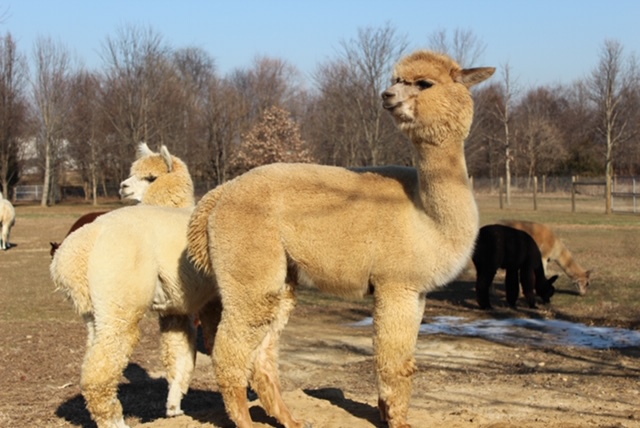Where Do Alpacas Come From
Alpacas are members of the camelid family. They are native to:
South Americas Andes Mountains – Chile, Peru and Bolivia.Llamas, Vicunas and Guanacos are the other three camelid family members that originated from South America. Alpacas were imported into the United States from late 1983 for about fifteen years.
Alpaca Facts
Alpacas are fiber-producing animals.
- Llamas were raised as beasts of burden and used for carrying loads.
- One might consider alpacas to be “South American” sheep. There are two types of alpacas:
- The Huacaya (wah-KI-ah): soft, crimpy fiber – teddy bear look!
- The Suri (sir-e’): little or no crimp that hangs down in beautiful pencil locks with luster and shine.
- Alpacas are a very intelligent, gentle, docile, curious, yet timid animal.They can easily be trained to lead and do obstacles. An Alpaca averages 150-170 lb. and stands about 36” at the withers,making them easy to handle. They live an average of 20 years of age.Alpacas are herd-oriented animals and can get stressed or despondent and lonely if alone.
- Since the Alpacas are environmentally-friendly, you can put 5-10 on one acre, contingent on fencing, layout, terrain, etc. They make a humming noise which is very relaxing to their owners.
- Do they spit?
- In defense – they can also stomp with their front feet as a way of defense as well.
- Also, when eating at the feed trough they will spit at one another as they consider it “their food”.
- Do they bite?
- No! They only have bottom teeth.
- Do they kick?
- Sometimes! They will when approached or touched from behind – but the soft, padded feet usually don’t hurt, but it will get your attention!
- Clean up is very easy, as they are very clean animals in that they all go in one spot – a “poop pile”. Alpaca manure makes a great fertilizer for gardens!
- A baby Alpaca is called a cria (cre-a).
- The father is called a sire; the mother is called a dam.The female can be bred at 18-24 months of age and will carry the baby for 11-12 months.
- Females are induced ovulators and will have 12-14 cria in a lifetime giving birth to a single cria – twins are rare, only 1 in 10,000.
- Delivery occurs during daylight hours. A cria weighs between 15-20 lbs and is standing within the first hour, and nursing within the second hour.
- At about three weeks after giving birth the female can be re-bred. A cria is with their mother for 6 months before it is weaned.
- All our alpacas are registered with the Alpaca Registry, so therefore they are all named, and yes we know all their names!
Alpaca Fiber
- Alpaca fiber is one of the world’s very finest and natural materials. Baby Alpaca is the finest classification of Alpaca fiber.
- Alpacas do not shed their fiber, but does get shorn once a year. Shearing is done in the spring so they can keep cool in the summer. Compared to wool, it is many times warmer, softer and lightweight. Alpaca can be as fine as cashmere and is similar to mohair in strength. People who have wool based allergies will not be allergic to Alpaca.
- Unlike sheep’s wool, Alpaca fiber does not contain lanolin (oil); therefore, it can be spun right off the animal.

